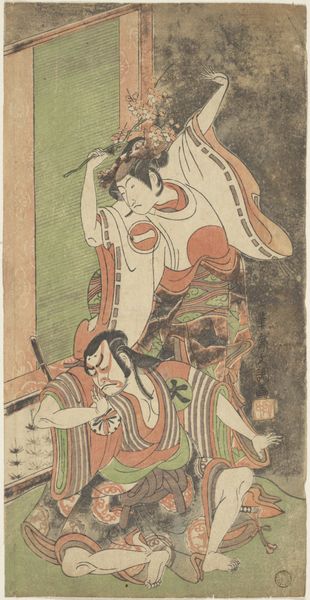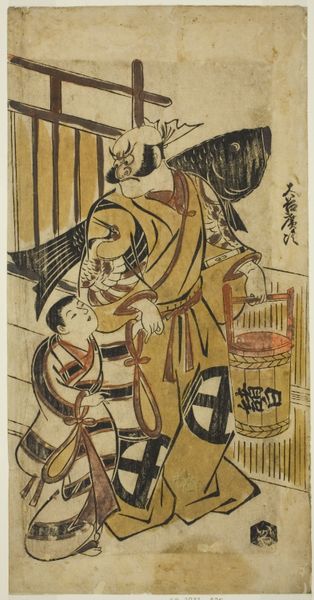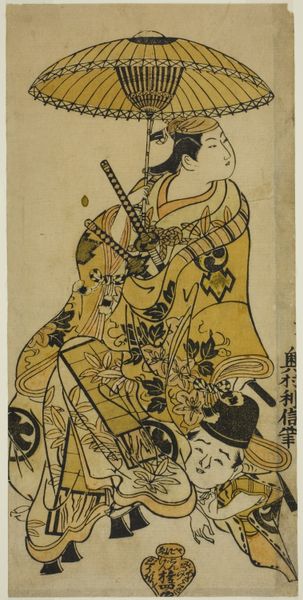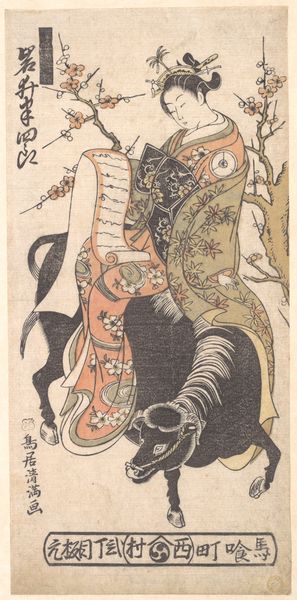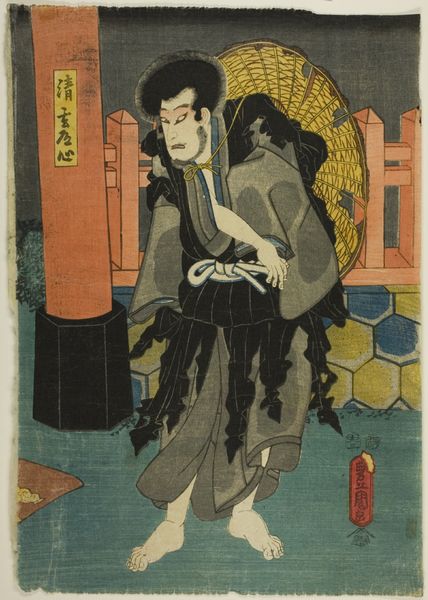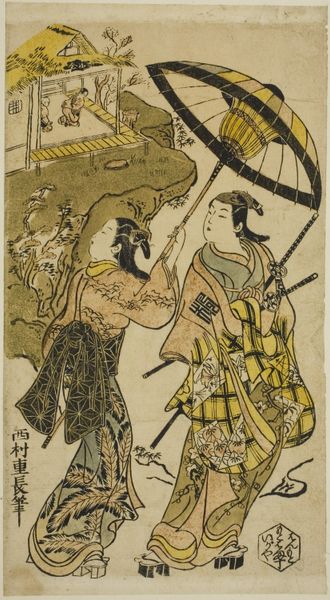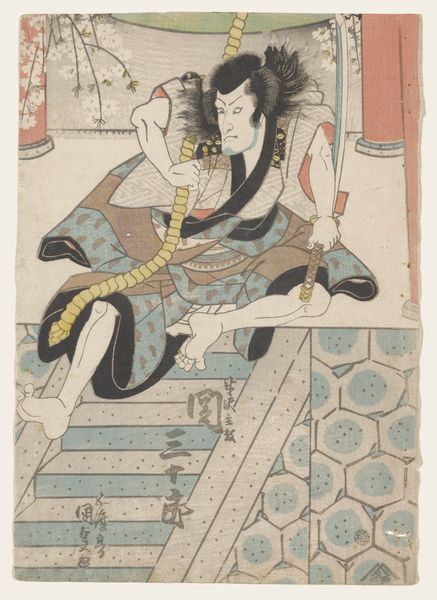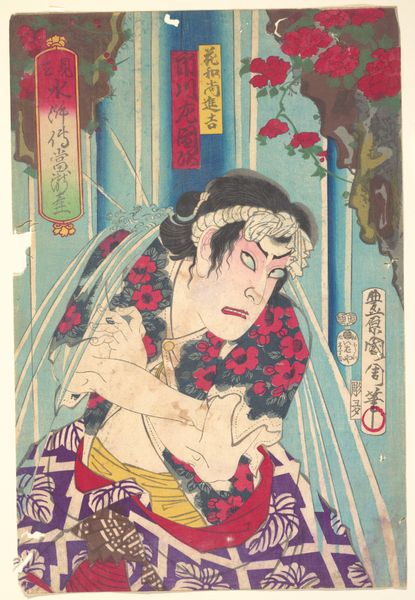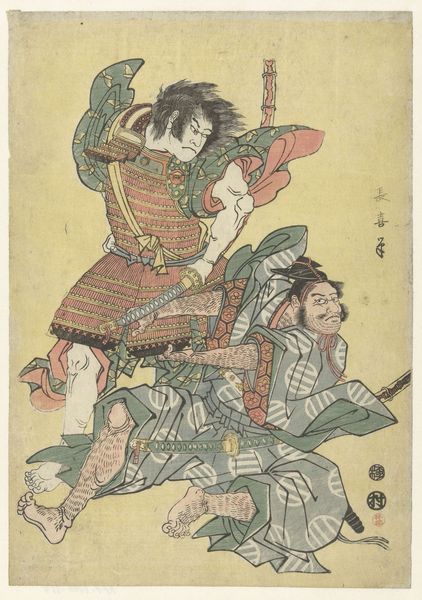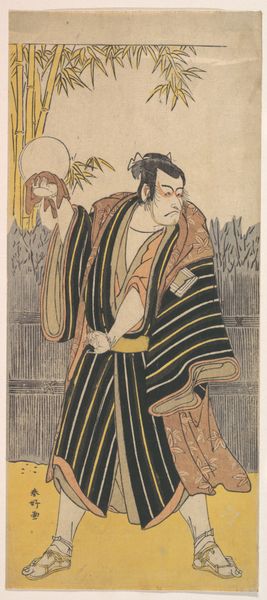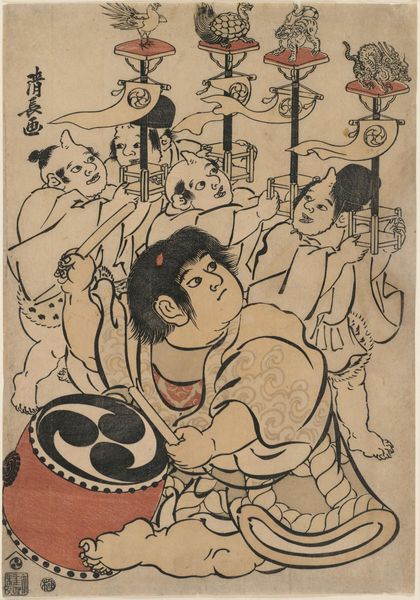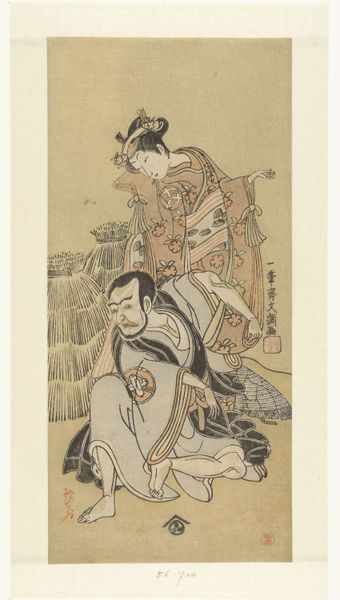
The Actor Ichimura Kamezo Fighting with the Aid of a Large Hatchet 1738 - 1758
0:00
0:00
print, woodcut
# print
#
asian-art
#
ukiyo-e
#
figuration
#
woodcut
Dimensions: 12 1/2 x 5 7/8 in. (31.8 x 14.9 cm)
Copyright: Public Domain
Curator: Well, here we have "The Actor Ichimura Kamezo Fighting with the Aid of a Large Hatchet," a woodcut print by Torii Kiyomasu II, dating from around 1738 to 1758. The artwork shows the Ichimura Kamezo, wielding his huge hatchet like it is nothing at all. Editor: My first impression? Dramatic. Absolutely bursting with dynamism! Look at the diagonal lines – from the angle of the hatchet to the actor's poised leg. And the exaggerated, almost cartoonish facial expression… Curator: Indeed. Those dynamic lines are a key feature of the early Torii school of ukiyo-e prints, specifically designed for kabuki theater advertising. This specific type is called "yakusha-e", which is known for portraits of kabuki actors. Editor: And think about the hatchet. In many cultures, the axe, the hatchet is about power and also about sacrifice and getting rid of dead weight, no? Perhaps it’s linked to clearing away the old to make space for the new. The actor becomes a powerful intermediary, a tool to take people away from themselves for just a brief moment. Curator: It’s interesting to connect it to ritual! Within the context of Kabuki, though, this exaggerated display of strength, combined with the stylized poses… Editor: Yes, stylized is the word. And isn't the color palette restricted? The light oranges, browns and the yellows dominate to produce a somewhat muted effect... Curator: Yes, "tan-e" or single color prints like these dominated before the full color prints. The subject is emphasized using simple lines and less reliance on color. Also, did you notice that most of the robes use patterns? Editor: Of course! Those floral and geometric motifs aren't just decoration, are they? They communicate rank and the specific role within the kabuki play… It makes you think about costume as identity. Not just what we wear but what stories our clothes tell about us. And I'm particularly struck by the tension between the obviously theatrical nature of the image. Curator: I am so intrigued by the intersection between performance and symbolic representation in these Kabuki actor prints. It's a conversation between what appears real and how symbols act in performance. Editor: Absolutely. I think that is very well said. Curator: Agreed. Editor: I can also say the same.
Comments
No comments
Be the first to comment and join the conversation on the ultimate creative platform.

